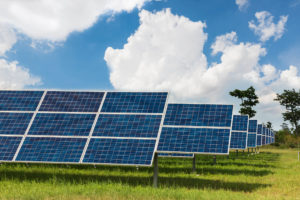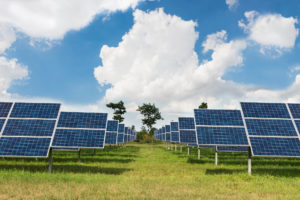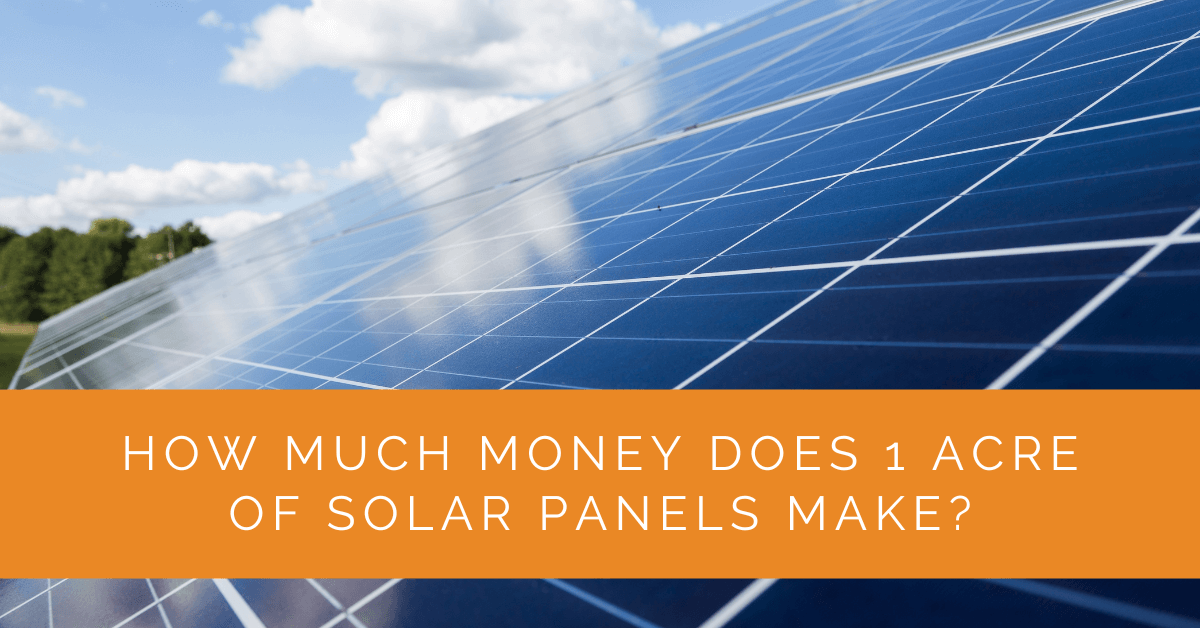The solar industry has witnessed tremendous growth in recent years, with solar farms becoming increasingly prevalent. Many people are curious about the financial potential of solar panel installations on a large scale. In this article, we will explore the income-generating potential of 1 acre of solar panels and delve into the factors that affect the profitability of such solar projects. Whether you’re considering starting a solar farm or simply curious about the financial returns, this article will provide valuable insights.
Contents
- 1 Key Takeaways
- 2 Understanding Solar Panels and Energy Production
- 3 Calculating Income from 1 Acre of Solar Panels
- 4 Considerations and Challenges
- 5 Case Study: Evaluating the Income Potential of 1 Acre of Solar Panels
- 6 Expert Insights From Our Solar Panel Installers About Income from 1 Acre of Solar Panels
- 7 Experience Solar Excellence with Us!
- 8 Conclusion
- 9 FAQ
Key Takeaways
- The income potential of 1 acre of solar panels depends on panel capacity, solar resources, revenue models, and financial considerations.
- Estimating energy production, considering revenue streams like net metering or feed-in tariffs, and evaluating installation and maintenance costs are crucial for calculating potential revenue.
- Factors like government policies, maintenance practices, grid interconnection, environmental considerations, and mitigating financial risks significantly impact the long-term profitability of 1 acre of solar panels.
- Estimating the potential income from 1 acre of solar panels requires considering specific factors, such as panel capacity, solar resources, and revenue models. For example, a 1 MW solar farm on 1 acre of land, assuming an average electricity rate of $0.10 per kilowatt-hour and a revenue model of net metering, can generate around $100,000 in annual revenue. However, the actual income may vary based on location and project-specific factors. Conducting accurate calculations and assessments helps determine the income potential of 1 acre of solar panels.
Understanding Solar Panels and Energy Production
The Function of Solar Panels
Solar panels are composed of photovoltaic cells that convert sunlight into usable electricity through the photovoltaic effect. When sunlight strikes the cells, it excites electrons, generating direct current (DC) electricity. This DC electricity is converted into alternating current (AC) electricity through inverters, making it suitable for powering homes, businesses or feeding into the electrical grid.
Solar Energy Production in Solar Farms
Solar farms consist of multiple solar panels arranged in arrays to capture sunlight on a larger scale. Various factors influence the energy production of a solar farm. The size and efficiency of the solar panels determine their capacity to generate electricity. The orientation and tilt angle of the panels is optimized to maximize sunlight absorption. Shading from nearby structures or vegetation can affect energy output. Regional solar resources, including average sunlight hours and solar irradiance, also impact energy production.
Revenue Generation from Solar Panels
The electricity generated by solar panels in a solar farm can be monetized through different revenue models. Net metering allows solar farm owners to feed excess electricity into the grid, earning credits or payments for the energy contributed. Feed-in tariffs provide a fixed payment rate per kilowatt-hour of electricity generated, guaranteeing a steady income stream. Power purchase agreements (PPAs) involve long-term contracts with utility companies to sell electricity at predetermined prices, ensuring a reliable revenue source.

Calculating Income from 1 Acre of Solar Panels
Determining Solar Panel Capacity
Calculating the income potential of 1 acre of solar panels requires determining the solar panel capacity that can be installed in the given area. The capacity is measured in kilowatts (kW) or megawatts (MW) and depends on factors such as the size, efficiency, and technology of the solar panels chosen. It represents the maximum electricity generation capacity of the solar farm.
Estimating Energy Production and Revenue
Estimating the energy production and revenue from 1 acre of solar panels involves assessing several key factors. Solar irradiance data are specific to the location, panel efficiency, and system orientation are considered to calculate the expected energy output per year. An estimation of the potential revenue can be derived by multiplying this energy production with the prevailing electricity rates or the contracted PPA price. It is essential to consider variations in solar resource availability throughout the year, such as seasonal changes in sunlight hours.
Financial Factors and Return on Investment
Financial considerations are vital in determining the income from 1 acre of solar panels. Installation costs include expenses related to solar panel procurement, land acquisition, engineering and design, mounting structures, electrical components, and grid interconnection. Ongoing operation and maintenance costs should also be factored into the financial analysis, including system monitoring, cleaning, and repairs. Assessing the return on investment (ROI) and payback period helps evaluate the profitability of the solar farm project.
Considerations and Challenges
Policy and Incentives
Government policies and incentives significantly impact the financial viability of solar panel installations. Many jurisdictions offer incentives such as tax credits, grants, or subsidies to promote renewable energy. It is crucial to research and understand the available incentives specific to the location of the solar farm project. These incentives can reduce upfront costs, improve financial returns, and accelerate the payback period.
Maintenance and Operations
Maintaining optimal performance and ensuring longevity is critical for maximizing the income potential of 1 acre of solar panels. Regular inspection and maintenance activities, such as cleaning the panels to remove dust or debris, help maximize sunlight absorption and energy production. Monitoring the system’s performance allows for early detection of any issues, ensuring prompt repairs and minimizing downtime. Implementing an effective operations and maintenance plan is essential for achieving long-term reliability and maximizing the income potential of the solar farm.
Grid Interconnection and Market Access
Grid interconnection is a vital consideration for solar farms. Connecting the solar farm to the electrical grid enables the sale of excess electricity or the import of electricity during periods of low solar generation. The grid interconnection process involves compliance with technical requirements, obtaining necessary permits, and adhering to local regulations. Understanding the interconnection process and ensuring a smooth connection to the grid is crucial for uninterrupted revenue generation.
Furthermore, market access plays a significant role in the income potential of 1 acre of solar panels. Assessing the local energy market, including electricity demand, pricing structures, and regulatory frameworks, is essential. Understanding market dynamics and establishing relationships with power purchasers or utilities is crucial for securing favorable agreements and optimizing revenue generation.

Environmental Considerations and Community Relations
Solar farms have environmental implications, and considering these factors is essential. Assessing the environmental impact of the solar farm project, such as land use, potential habitat disruption, or visual impacts, helps ensure sustainable development. Engaging with the local community and addressing concerns regarding the solar farm’s location, construction, and operation is vital for maintaining positive community relations and securing necessary approvals.
Long-Term Performance and System Degradation
Solar panels have a typical lifespan of 25 to 30 years, but their performance can degrade over time. Understanding the degradation rate and planning for panel replacement or refurbishment is crucial for maintaining optimal energy production and income potential. Additionally, advancements in solar technology should be considered to leverage potential efficiency improvements and reduce maintenance costs over the project’s lifespan.
Financial Risks and Uncertainties
Like any investment, solar farms carry financial risks and uncertainties. Fluctuations in electricity prices, changes in government policies or regulations, and evolving market conditions can impact revenue streams. Conducting a thorough financial analysis, including sensitivity analyses to assess potential risks, helps mitigate these uncertainties. Engaging with industry experts and professionals can provide valuable insights and guidance in navigating these financial risks.
By addressing these considerations and challenges, solar farm operators can maximize the income potential of 1 acre of solar panels. Evaluating policy incentives, implementing effective maintenance practices, ensuring grid interconnection, considering environmental factors, and mitigating financial risks all contribute to solar farm projects’ long-term success and profitability. With proper planning, careful evaluation, and proactive management, 1 acre of solar panels can generate a sustainable and lucrative income in the growing renewable energy industry.
Case Study: Evaluating the Income Potential of 1 Acre of Solar Panels
Background
At Solar Panels Network USA, we strive to provide detailed insights into the financial benefits of solar energy investments. With the growing interest in large-scale solar farms, we conducted a comprehensive analysis to determine the income potential from 1 acre of solar panels.
Project Overview
A landowner approached us to explore the feasibility and profitability of installing solar panels on their 1-acre property. The goal was to estimate the potential income, considering various influencing factors, and provide a clear financial projection.
Implementation
- Site Assessment and Solar Panel Capacity: We started with a detailed site assessment to determine the optimal panel capacity for the 1-acre land. Considering factors like panel size, efficiency, and spacing, we estimated the installation of approximately 400 to 800 solar panels, aiming for a total capacity of 1 megawatt (MW).
- Energy Production Estimation: Using regional solar irradiance data and panel efficiency metrics, we calculated the expected annual energy production. In the given location, with an average sunlight availability of 5 hours per day, the 1 MW solar farm was projected to produce approximately 1.5 million kilowatt-hours (kWh) of electricity annually.
- Revenue Model and Financial Analysis: We explored different revenue models, including net metering, feed-in tariffs, and power purchase agreements (PPAs). Based on the local electricity rate of $0.10 per kWh and the chosen revenue model of net metering, the estimated annual revenue was around $150,000. This model allowed the landowner to earn credits for excess electricity fed back into the grid.
- Cost and ROI Calculation: The initial installation cost, including solar panels, inverters, mounting structures, and grid interconnection, was estimated at $1 million. Annual maintenance costs were projected at $20,000. Considering these expenses, the return on investment (ROI) and payback period were calculated. With an annual revenue of $150,000 and annual maintenance costs of $20,000, the payback period was approximately 7 years, post which the landowner would generate a significant profit.
Results
The financial analysis demonstrated that 1 acre of solar panels could generate substantial income under optimal conditions. The project was projected to be highly profitable, with significant long-term returns, especially after the initial payback period.
Summary
Investing in 1 acre of solar panels can be a lucrative venture, provided various factors are carefully considered. Accurate calculations of energy production, thorough financial analysis, and understanding of local policies and incentives are crucial for assessing profitability. At Solar Panels Network USA, we help landowners and businesses navigate these complexities to maximize their solar investments.
Expert Insights From Our Solar Panel Installers About Income from 1 Acre of Solar Panels
The income potential from 1 acre of solar panels varies significantly based on factors like panel efficiency, location, and available incentives. With optimal conditions, a well-maintained solar farm can generate substantial revenue.
Senior Solar Installer
Accurate calculations of energy production and thorough financial analysis are crucial. Factors such as regional solar resources, installation costs, and maintenance practices greatly impact the profitability of solar projects.
Lead Installation Technician
Government policies and incentives play a pivotal role in the financial viability of solar farms. Staying updated on available tax credits and subsidies can significantly enhance the return on investment for solar panel installations.
Certified Solar Installation Expert
Experience Solar Excellence with Us!
Trust in Solar Panels Network USA, where our seasoned experts deliver top-quality solar solutions for homes and businesses nationwide. With a legacy of countless successful installations and a commitment to sustainable energy, we’re your reliable partner in the solar journey. Ready for a brighter, eco-friendly future? Call us now at (855) 427-0058 and harness the power of the sun!
Conclusion
1 acre of solar panels has the potential to generate substantial income, provided various factors are considered. Understanding the fundamentals of solar panel energy production, such as revenue models and factors influencing income, is key to assessing the financial returns of solar farms. Calculating the solar panel capacity, estimating energy production, and considering revenue models help project the potential income from 1 acre of solar panels.
However, it’s important to remember that starting a solar farm involves costs, including installation expenses and ongoing maintenance. Conducting a thorough financial analysis and considering factors such as the policy and regulatory environment is essential for assessing the project’s profitability. Engaging with solar industry professionals, including solar developers and consultants, can provide valuable guidance and insights for maximizing returns and navigating the complexities of the solar industry.
As the solar industry grows and renewable energy becomes increasingly important, starting a solar farm can offer an attractive return on investment while contributing to a sustainable future. By leveraging solar power’s potential, individuals, communities, and businesses can not only generate income but also make a positive impact on the environment. So, if you’re considering venturing into the solar industry and aiming to harness the potential of solar energy, exploring the financial returns of a solar farm per acre is a promising endeavor worth pursuing.
FAQ
How many solar panels can you put on 1 acre of land?
The number of solar panels installed on 1 acre of land depends on various factors such as panel size, efficiency, and spacing. On average, it can range from 400 to 800 panels, but the specific number will vary based on these factors and the desired capacity of the solar farm.
How much power does a 1 acre solar farm produce?
The power generation of a 1 acre solar farm depends on factors such as panel capacity, efficiency, sunlight availability, and local solar resources. On average, a 1 acre solar farm can generate around 1 to 2 megawatts (MW) of electricity, although the actual output may vary based on specific conditions.
Are solar farms worth it?
Solar farms can be a financially viable investment with the potential for long-term profitability. Solar resource availability, government incentives, electricity rates, and installation costs influence financial returns. Conducting a thorough financial analysis, considering factors like the payback period and return on investment, helps determine whether a solar farm is worth pursuing.
How profitable is owning a solar farm?
The profitability of owning a solar farm depends on multiple factors, including the size of the farm, energy production, revenue models, installation costs, ongoing maintenance expenses, and policy incentives. Solar farms can generate consistent income and offer a profitable venture in the renewable energy industry when properly planned and managed. However, assessing the specific project details, local market conditions, and financial considerations is essential to determine the potential profitability.
About the Author
Solar Panels Network USA stands at the forefront of solar energy solutions, driven by a team of seasoned solar engineers and energy consultants. With over decades of experience in delivering high-quality solar installations and maintenance, we are committed to promoting sustainable energy through customer-centric, tailored solutions. Our articles reflect this commitment, crafted collaboratively by experts to provide accurate, up-to-date insights into solar technology, ensuring our readers are well-informed and empowered in their solar energy decisions.

